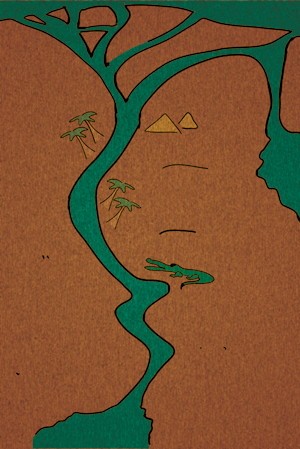Forgotten history
Aboriginal voyageurs instrumental in British Nile expedition
I have been fortunate to have taught quite a few students from Sudan in my classes. One of the things that surprises them the most is when I tell them that aboriginals from Canada were on the Nile River during 1884 and 1885 on an expedition to try and save British Maj.-Gen. Charles Gordon from the rebel armies of the Mahdi, who were attempting to drive the British from Sudan.
The Mahdi were trying to bring Islamic law to the Nile region of Egypt and Sudan. They had defeated a British force of 10,000. Shortly after, they had Gordon’s forces surrounded in the Sudanese city of Khartoum.
In order to save Gordon and the British, an expeditionary force was needed to sail down the Nile River. Heading the expedition was Gen. Garnet Wolseley, the same Wolseley who had quelled the Métis resistance in Manitoba in 1870.
During the 1870 resistance, 300 aboriginal voyageurs had captained the boats that took Wolseley’s army of 1,100 to the Red River in order to defeat Louis Riel and the Métis. Previous experience had shown Wolseley that aboriginal voyageurs were among the best boat men in the world.
The subsequent expedition to the Nile included 56 Mohawks from Kahnawaké, Akewsasné and Kanesataké, along with 21 Ojibwa and Métis from Manitoba. They were the descendants of a long line of voyageurs going back to the 17th century.
In neither campaign were the voyageurs expected to take up arms. Most joined the campaigns due to their sense of adventure. However, they were indispensable in transporting troops along the dangerous river routes in both Canada and later, Egypt and Sudan.
Among the voyageurs was Henry Prince, an Ojibwa from Manitoba. Prince was descended from Ojibwa that arrived in Manitoba in the 1790s. Over the years, they had been loyal to the Crown and, under chief Peguis, helped the Red River settlers upon their arrival in Manitoba in 1812.
Most notable of the Prince family was Sgt. Tommy Prince, the highest decorated aboriginal soldier during the SecondWorld War and the Korean War.
Today, Métis resistance in 1870 and 1885 has become the iconic symbol of aboriginal resistance to colonial subjugation in Canada; however, aboriginal history is often more complex than what it is sometimes perceived to be.
During the Nile expedition, both Métis and aboriginal men, some of whom had participated in the 1870 expedition against Riel, joined together and sailed down the Nile trying to save a British general. However, their importance to the British and Canada was short-lived.
Upon their return to Canada in 1885, the Métis would be putting up their final resistance at Batoche, Saskatchewan. A railway had been built to transport the troops out west and the aboriginal voyageurs were no longer needed.
Brian Rice is an associate professor of education at the University of Winnipeg.
Published in Volume 64, Number 11 of The Uniter (November 12, 2009)







